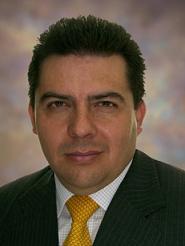 Objective
Objective
Know the theoretical principles of optics and electronics applied to safety and process control. Differentiate the elements that are used in CCTV systems. Know how to apply existing standards at an international level, on ducts and video equipment. Analyze the benefits and limitations of different configurations, topologies, and equipment features. Know why it is the security technology, which has advanced the most in the last 10 years. Learn other uses that CCTV systems have worldwide.
Participants
This course is aimed at electrical and electronic engineers, builders, system installers, architects, electrical network designers, administrators, professionals responsible for the technological and security area, who wish to know in detail the TV equipment as a verification and registration tool in security and control tasks, insurers
Methodology
1. Introduction
1.1.1. Presentation of Objectives.
1.1.2. Location of the system within the electronic network scheme
1.1.3. Analysis of the environment and the current market
1.1.4. Companies in the sector. Regulation.
1.1.5. Problems and Solutions.
2. Basic principles
2.1. Optical System
2.1.1. Lighting
2.1.2. Opening
2.1.3. Depth of Field
2.1.4. Focal length
2.1.5. Iris
2.1.6. Focus
2.1.7. Shutter
2.2. Electronic System
2.2.1. Video Signal
2.2.1.1. Standards
2.2.1.2. Parties
2.2.1.3. Synchronism
2.2.1.4. Quality
2.2.1.5. Bandwidth
2.2.2. Camera
2.2.2.1. Evolution: Tubes vs. CCD
2.2.2.2. CCD Formats
2.2.2.3. Electronic emulation: Shutter, Iris
2.2.2.4. Resolution lines
3. Components
3.1. Cameras
3.1.1. Types – sizes
3.1.2. Latest Technologies
3.1.3. Characteristics
3.1.4. Selection criteria
3.2. Lenses
3.2.1. Fixed - Variables
3.2.2. Motorized
3.2.3. Automatic
3.2.4. Selection criteria
3.3. Covers and Supports
3.3.1. Convenience of models
3.3.2. Environmental Accessories
3.3.3. Other Accessories
3.3.4. Selection Criteria
3.4. Image Management System
3.4.1. Sequencer
3.4.2. Image Splitter
3.4.3. Multiplexer
3.4.4. Video Matrix
3.5. Positioning and guidance systems
3.5.1. Manual
3.5.2. Scanner
3.5.3. Pan / Tilt Motors
3.5.4. Zoom Motors
3.5.5. High-speed domes
3.6. Remote Motor Control
3.6.1. Control Protocols
3.6.2. Multiplexed Systems
3.6.3. Direct Systems : RS 485 – Manchester -ByFase
3.6.4. Other
3.7. Video Recorders
3.7.1. Analogues
3.7.1.1. Concept of Multiplexing over Time
3.7.1.2. Traditional Characteristics
3.7.2. Digital
3.7.2.1. New Features
3.7.2.1.1. FPS – Bytes – Pixels
3.7.2.1.2. Compression Formats
3.7.2.2. Advantages and Limitations over traditional
3.7.2.3. Capacity vs. Quality
3.7.3. Hybrids
3.7.4. Practical exercises of SPF vs DD vs Compression vs. Motion
3.8. Equipment Accessories
3.8.1. Infrared spotlights
3.8.2. Image Intensifiers
3.8.3. Digital Motion Detector
3.8.4. Amplifiers – Isolators – Repeaters – Decoders
3.8.5. Transceivers – Bálums
3.8.6. CTV Kits - Video Intercoms
3.9. Means of transmission
3.9.1. Coaxial cable
3.9.2. Braided Cable
3.9.3. Optical Fiber
3.9.4. Wireless
4. Practical applications
4.1. Museums – Penitentiaries
4.2. ATMs and Supermarkets
4.3. Perimeter Control - Parks
4.4. Citizen Protection – Traffic
4.5. Production Control
4.6. Quality Control
4.7. Home use
4.8. Campus
4.8. Automobiles
5. System design
5.1. Design Criteria
5.2. Budget
5.3. Technical and legal considerations
6. Practical review
6.1. Installing a Multiplexer
6.2. Installing a DOMO
7. Conclusions
8. Evaluation
Accreditation or Certification
This course awards an WINGS diploma to those who pass it. Those who do not pass the exam receive a certificate of attendance and can repeat the course for free when it is retaken in their country or city.
About the instructors
Germán Alexis Cortés is an independent consultant and electronic engineer with 18 years of experience in the electronic security industry and postgraduate in engineering project management and specialization in electronic security and automation, is CCP of ASIS, and CISSP of ISC. He has extensive experience as a university professor and lecturer on electronic security issues. He currently runs his own consulting company and electronic security and automation projects.
Jose Vicente Calderón is an Electronic Engineer from the Javeriana University in Bogotá, Colombia. He has worked for more than 25 years in the Electronic Security sector. Connoisseur of technologies of numerous brands. He has worked as a solution integrator in various projects nationally and internationally. He is currently the General Manager of General Security and is an Official ALAS Instructor for the Video area.
























Leave your comment